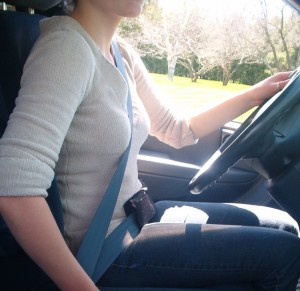By Carl Reynolds Attorney at Law –


Here, in Florida, not only is it the law; but, it is the smart thing to do. And, buckle your children. They are our future. Together, we can keep the good from dying much, much too young.
Here are some other tips for safe driving:
- Don’t text and drive! Accidents are just that—accidents. No one means to crash their car into another vehicle (unless you are in a demolition derby); however, you can certainly increase your risk if you aren’t paying attention. And no matter how good you think you are at multi-tasking, you cannot pay attention properly and text at the same time. So, don’t do it!
- Keep your headrest at a height level equal to the top of your head. Many accidents involve rear-end collisions. These accidents cause the body to move backward and forward and then the head snaps in a similar, albeit exaggerated fashion—backward then forward, often resulting in whiplash. If you have your headrest at the proper height level, you can minimize whiplash symptoms by limiting how far your head snaps backward. If you have it set too low, it can act as a fulcrum at the base of your skull and cause serious strain on the neck as your head snaps backward and then is propelled forward.
- Keep a safe distance! If you can remember being able to get to Orlando and back on less than $10.00 worth of gas, it has probably been a while since you have taken a driving test. As a refresher, a safe driving distance is typically knows as the “three second rule.” To determine the right following distance, first select a fixed object on the road ahead such as a sign, tree or overpass. When the vehicle ahead of you passes the object, slowly count “one one thousand, two one thousand, three one thousand.” If you reach the object before completing the count, you’re following too closely. Making sure there are three seconds between you and the car ahead gives you time and distance to respond to problems in the lane ahead of you. In heavy traffic, at night or when weather conditions are not ideal (e.g. rain, fog, smoke), double the three second rule to six seconds for added safety.
- Don’t run red lights! Most catastrophic collisions occur at intersections and most often involve the disregarding of a traffic signal. Many Florida intersections are now equipped with red light cameras to catch offenders. Though the use of these red light cameras is somewhat controversial and there are conflicting studies as to whether or not the cameras decrease fatal accidents or increase them, the bottom-line is that the principle behind the use of these cameras is, contrary to some opponents, not to simply generate revenue to the city, county or state; but, rather to discourage the running of red lights in hopes of decreasing red light running-related accidents. The average wait time at a traffic light is around two minutes. There is nothing so important for you to get to that justifies risking your life and the lives of others in order to save two minutes; so, don’t run red lights! Not only could it save you a few bucks in the form of a ticket; but, it could just save your life (and the life of another).
Carl Reynolds Law – 941-747-3300
 Southwest Florida's Health and Wellness Magazine Health and Wellness Articles
Southwest Florida's Health and Wellness Magazine Health and Wellness Articles

